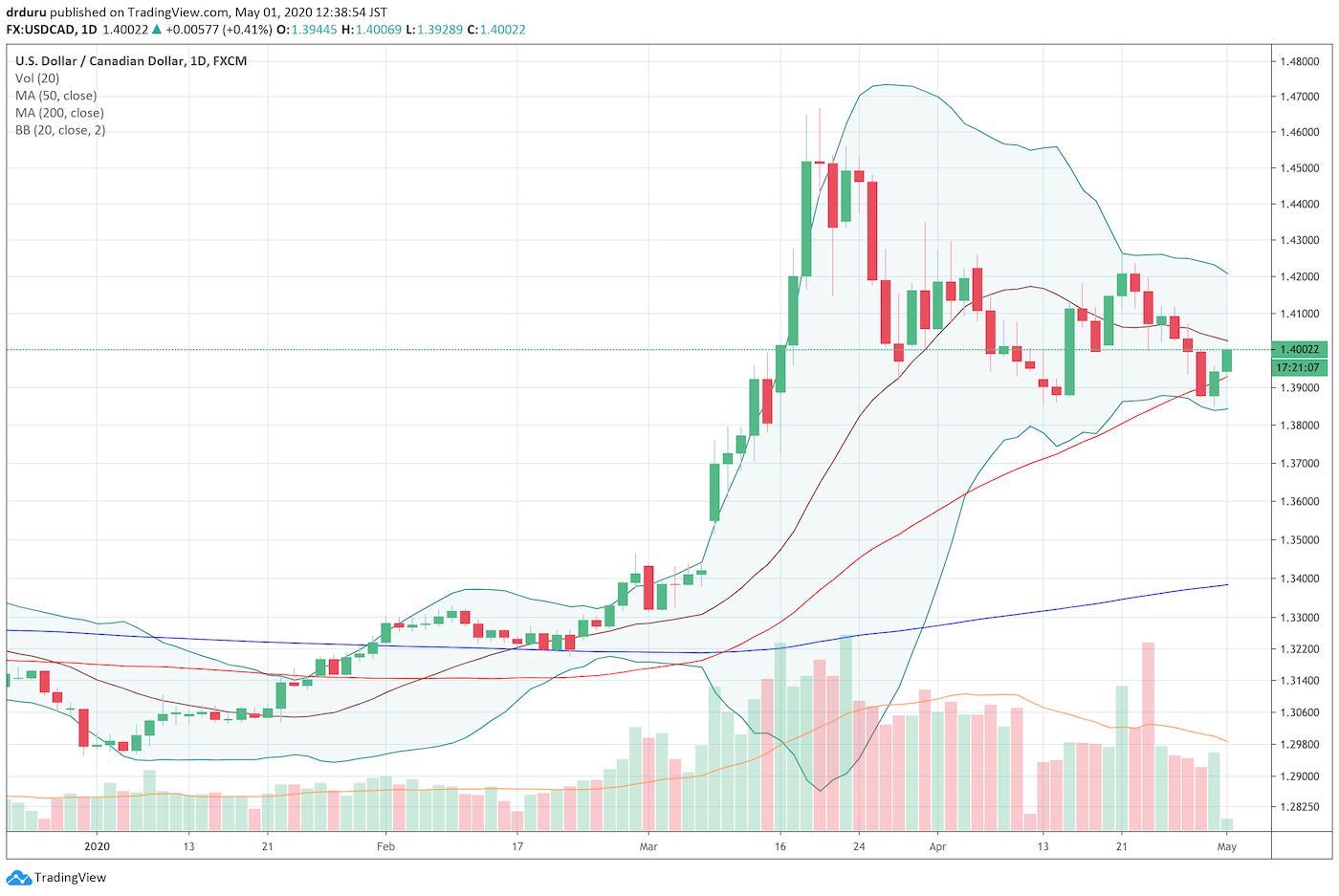The Canadian Dollar
After the Canadian dollar (USD/CAD) sold off in the wake of the Bank of Canada’s latest Monetary Policy Report (MPR), I doubled down on my bullish bet on the currency (short USD/CAD). That bet paid off as general weakness in the U.S. dollar took USD/CAD back down to its 50-day moving average (DMA). USD/CAD also tested that pre-MPR low from April. I did not want to bet on such solid support giving way easily, so I quickly took profits. After seeing USD/CAD bounce off that support, I quickly flip-flopped on my bet.

Source: TradingView.com
At the time of writing, I am watching my flip-flop suddenly pay off. USD/CAD is now approaching resistance from the downward trending 20DMA, so I doubt I will stay flip-flopped for much longer. I am writing mainly to flag the technical behavior of USD/CAD. USD/CAD looks like it is starting to pivot around its 20DMA. I will flip-flop yet again and go all in if USD/CAD decisively cracks what is now a double-bottom at April lows.
If the positive attitude from the Bank of Canada is any indication, then investing in the Canadian dollar over time is a pretty solid bet.
Coronavirus “Teachable Moments” from the Bank of Canada
Stephen Poloz, the governor of the Bank of Canada, gave a speech at the Ivey Business School in London, Ontario that summarized the economic fallout from the coronavirus pandemic and the resulting institutional responses. Poloz provided the punchline at the end. I think these “teachable moments” speak for themselves:
- Use scenarios, but focus on the narrative they represent. Avoid numbers when uncertainty is extreme, as they can generate a cloud of possibilities that many will struggle to understand.
- Make sure everyone understands your goals. Everything you do needs to have an explicit purpose and be part of a coherent framework.
- Crisis conditions argue for vigorous, even outsized, responses because maintaining confidence is critical to the recovery; gradualism is unlikely to succeed.
- Coordinated policy actions are more powerful than stand-alone ones. That coordination may be domestic, or international.
Poloz also had some nuggets of wisdom about leadership and management in times of crisis:
- Diversity of past experience pays when blazing a new trail.
- Crises are exhausting—a deep personnel bench is a key part of resilience.
- Over-invest in technology and business continuity preparedness.
- Stay in touch with staff—even the ordinary things must still happen.
These lessons surely form the basis of his confidence in the future. Poloz made some very bullish statements about the Canadian economy. They are subtle to the casual reader, but the careful reader can see light at the end of the tunnel that Poloz sees.
First, Poloz insisted that the extraordinary and historical actions of the Bank of Canada “…will put a floor under the economy as well as business and consumer confidence.” Fiscal responses like the wage subsidy will create a “rapid rebound in activity once containment measures are removed.” Poloz is so optimistic that he even thinks the best case scenario created by his staff of forecasters is “within reach.”
Poloz further reinforced the positive outlook by comparing the current economic calamity to a natural disaster and the recoveries that follow:
“…the situation is much more like a natural disaster than a typical economic recession—with policies designed to essentially stop the clock and later restart it. Economic recoveries from natural disasters are usually quite rapid and robust.”
For those people panicking over the prospects of a Depression, Poloz offered a stark historical comparison. He contrasted the current policy responses to the way policy makers during the Great Depression created reinforcing dynamics that worsened economic conditions. Now, fully sensitized to the potential damage from inaction and stepping aside when markets cry out for liquidity, the Bank of Canada, and other central banks, are stepping up to crate stabilizing forces. Poloz described the stabilization process by reassuring people that the Bank of Canada is not printing money:
“Some commentators have likened these operations to “printing money,” which will cause inflation down the road. Indeed, these operations do look the same as what happens when the Bank prints new bank notes. However, this is quite different. Out in the economy people are choosing to hold cash, whether by drawing on a line of credit or by selling a financial asset. If the central bank did not provide that liquidity, a credit crunch would ensue, and that would create a significant downdraft in the economy—in effect, a deflationary shock. Countering that shock requires providing the demanded liquidity until tensions ease, essentially countering a deflationary shock with an inflationary policy…. these actions are stabilizing, not inflationary.”
After reading this speech, I rediscovered my preference to bias on the bullish side with the Canadian dollar.
Be careful out there!
Full disclosure: no positions
